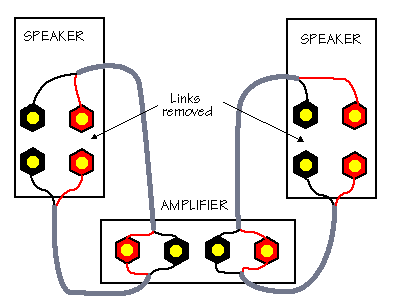I think all of you are missing the point completely, and confusing our Bass King even more. Let me try to explain.
If the days of DVD, space was a constraint, and everything had to be compressed - video and audio. Dolby DTS used different forms of compression, storage, and delivery. This was done first for the cinema halls, then for the HT systems. For example in cinema halls, Dolby would use the film itself to carry the audio, while DST would supply the audio is a separate CD that had to be played along with the film.
A standard DVD had a max capacity of 4.7 gigabytes per layer and most of this was taken up by the compressed video. So very little space was available for audio. Both Dolby and DTH had to deploy high compression lossy techniques to fit in the data. In addition, because most HT systems available a few years ago were just 5.1, they would also chop off the sound to the rear channels. When the film were converted, most owners would opt for 5.1 channels of sound which were then compressed using either Dolby or DTS technologies.
When Blu-Ray and HD-DVD, you suddenly had 3.5 times more capacity per layer. Where you could store only 4.7 GB before, you could now store nearly 15 GB per layer. A two layer disc could now store nearly 30GB of data, Thus Dolby and DTS re-wrote the rules of audio storage for movies and started using lossless compression techniques. This is what is called High Definition audio. This has nothing to do with 5.1 or 7.1.
Yes, since more space was available, some of the software owners started re-writing the movies with full 7.1 channels of audio.
HD Audio can be in 5.1 or 7.1 format. This will be specifically mentioned in the disc. To play an HD Audio movie, the audio CODECS must be decoded either by the player or by the AV Receiver. If the sound is to be decoded AVR, it can be sent to the AVR only through HDMI as neither optical nor co-axial connection have the needed bandwidth.
Most AVRs and players have the capacity to decode 7.1 channels. But, you can play a HD audio through a 5.1 speaker set. IF and only IF there is sound in the Rear channels will you miss some part of the sound. Otherwise you will get full high definition audio on all the other channels.
Biamping and BiWiring is a completely different matter.
Cheers
If the days of DVD, space was a constraint, and everything had to be compressed - video and audio. Dolby DTS used different forms of compression, storage, and delivery. This was done first for the cinema halls, then for the HT systems. For example in cinema halls, Dolby would use the film itself to carry the audio, while DST would supply the audio is a separate CD that had to be played along with the film.
A standard DVD had a max capacity of 4.7 gigabytes per layer and most of this was taken up by the compressed video. So very little space was available for audio. Both Dolby and DTH had to deploy high compression lossy techniques to fit in the data. In addition, because most HT systems available a few years ago were just 5.1, they would also chop off the sound to the rear channels. When the film were converted, most owners would opt for 5.1 channels of sound which were then compressed using either Dolby or DTS technologies.
When Blu-Ray and HD-DVD, you suddenly had 3.5 times more capacity per layer. Where you could store only 4.7 GB before, you could now store nearly 15 GB per layer. A two layer disc could now store nearly 30GB of data, Thus Dolby and DTS re-wrote the rules of audio storage for movies and started using lossless compression techniques. This is what is called High Definition audio. This has nothing to do with 5.1 or 7.1.
Yes, since more space was available, some of the software owners started re-writing the movies with full 7.1 channels of audio.
HD Audio can be in 5.1 or 7.1 format. This will be specifically mentioned in the disc. To play an HD Audio movie, the audio CODECS must be decoded either by the player or by the AV Receiver. If the sound is to be decoded AVR, it can be sent to the AVR only through HDMI as neither optical nor co-axial connection have the needed bandwidth.
Most AVRs and players have the capacity to decode 7.1 channels. But, you can play a HD audio through a 5.1 speaker set. IF and only IF there is sound in the Rear channels will you miss some part of the sound. Otherwise you will get full high definition audio on all the other channels.
Biamping and BiWiring is a completely different matter.
Cheers


